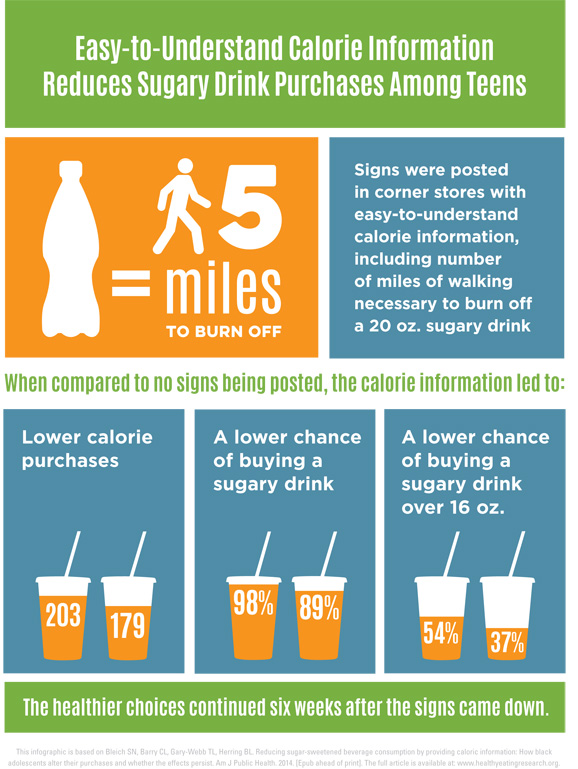Sugar-sweetened beverages (SSB) are an important contributor to adolescent obesity. One promising environmental strategy to reduce consumption of SSBs is to provide consumers with easily understandable caloric information. This infographic examines the effect of in-store calorie signage on adolescent sugary drink purchases. Findings presented in this infographic come from a related HER-funded journal article.
Age Groups: Adolescents (grades 9 to 12), Young adolescents (grades 6 to 8)
Race/Ethnicity: African American or Black
Focus Area: Beverages
Keywords: Corner store, Food outlet, Menu Labeling, Neighborhood, Point-of-decision prompts, Sugar-sweetened beverages, Urban, Water
Resource Type: Infographic
State: Maryland
Related Research
October 2014
Reducing Sugar-Sweetened Beverage Consumption by Providing Caloric Information: How Black Adolescents Alter Their Purchases and Whether the Effects Persist
This paper examines the ways in which adolescents altered the type and size of their purchases of sugar-sweetened beverages (SSBs) in response to an intervention in six corner stores located in lower-income, predominately black neighborhoods in Baltimore, Maryland. Researchers used one of four randomly posted signs with caloric information about a 20 ounce SSB: 1) MoreNovember 2011
Simplifying Caloric Labeling on Sugar-Sweetened Beverages to Reduce Consumption of Excess Calories
Providing easily understandable caloric information may be a low-cost strategy for lowering overall caloric intake among groups at high risk for obesity, particularly Black and Hispanic adolescents ages 12 to 18. The aims of the study are to: 1) examine if providing caloric information on sugar-sweetened beverages (SSBs) significantly reduces the frequency and volume of MoreMarch 2024
